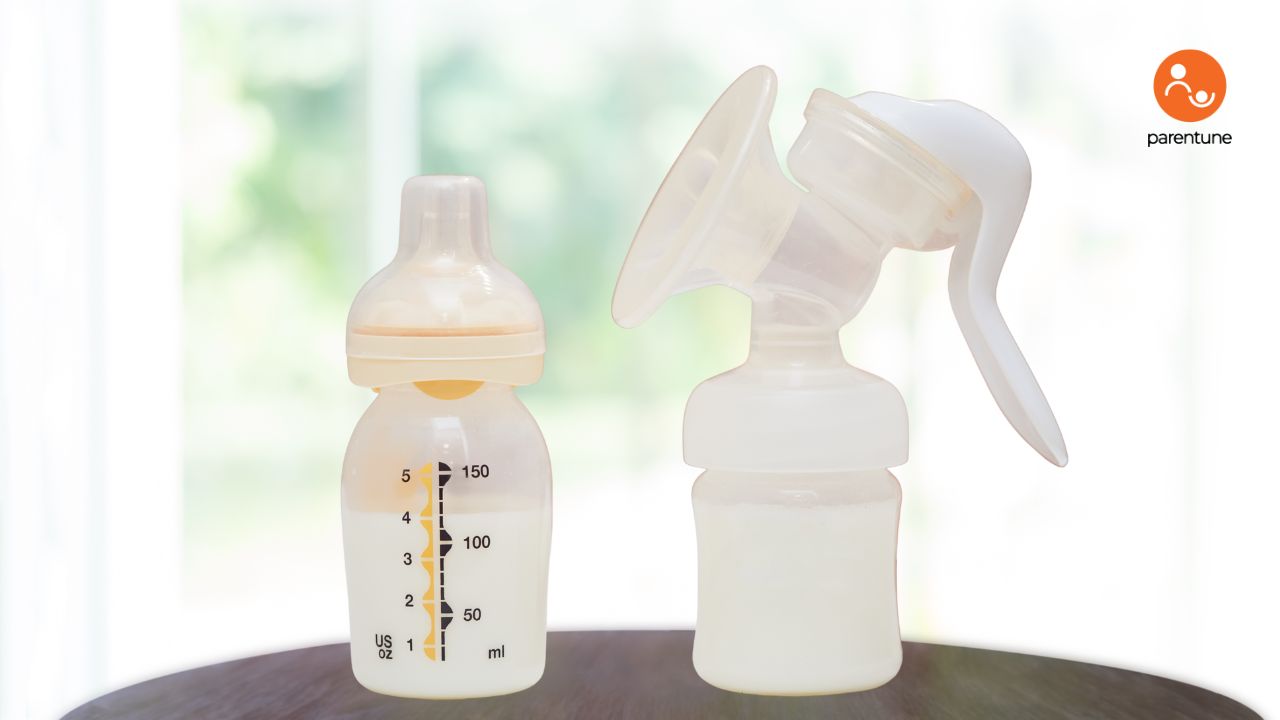breastfeeding
How Much Milk Does A Newborn Drink Per Feed?

The question every new parent asks—usually at 3 AM
You’re sitting in the dim glow of a nightlight, baby in arms, bottle in hand (or maybe breastfeeding)—and the question quietly creeps in:
“Is this enough?”
Not just love or warmth. But milk. Ounces. Milliliters. The kind of answer that would let you sleep a little more soundly.
Doctor Q&As from Parents like you
Let’s unpack that.
Because how much a newborn drinks per feed isn’t just a number. It’s a system—timing, stomach size, hunger cues, growth spurts, and evolving routines. And when you understand the pattern, the guesswork fades. Confidence steps in.
Why Newborn Milk Intake Isn't One-Size-Fits-All
You’d think nature would make this easy.
But newborns don’t come with fuel gauges.
Instead, their intake varies wildly based on:
-
Age in days or weeks
-
Feeding method (breast vs bottle)
-
Birth weight and growth rate
-
Whether they’re cluster feeding or going through a growth spurt
That’s why comparing your baby to the one next door—or even to your first child—is a losing game.
What matters is knowing the range, watching your baby’s cues, and trusting the rhythm that builds with time.
Also Read:
How Much Milk Per Feed? Let’s Break It Down By Age
Day 1–2: Just a few drops—and that’s enough
In the first 24 hours, your newborn’s stomach is the size of a marble.
Literally.
They’ll only need about 5–7 ml per feed (that’s roughly a teaspoon). If you’re breastfeeding, colostrum handles this beautifully—dense, gold, and packed with nutrients.
Don’t let the small quantity fool you—it’s by design.
Day 3–5: Bigger belly, more demand
Your baby’s stomach grows to the size of a walnut. Intake rises to 22–27 ml per feed.
This is often when babies feed more frequently—and when parents start worrying whether they’re producing enough. (Spoiler: most are.)
If your baby is having at least 6 wet diapers a day and seems content post-feed, you’re on track.
Week 1–2: 45–60 ml per feed
Milk supply ramps up. Feeding becomes more rhythmic. Your baby may feed every 2–3 hours, totaling 8–12 times per day.
They’ll likely drink 400–600 ml per day in total, depending on whether they're breastfeeding or bottle feeding.
At this point, it’s not just nutrition. It’s comfort. Connection. Regulation.
Milk is both food and feeling safe.

Week 3–4: 75–90 ml per feed
By now, your baby’s feeding capacity and hunger cues are more predictable. Growth spurts around this time can temporarily increase appetite.
Some feeds may cluster. Others might stretch. But overall, expect 700–800 ml/day intake if bottle-fed.
Breast Vs. Bottle: Does The Amount Change?
Yes—and no.
-
Breastfed babies tend to regulate their own intake more precisely. The average amount might stay between 700–900 ml/day for months, even as they grow. That’s because breast milk composition changes to meet needs.
-
Bottle-fed babies might consume slightly more volume per feed—especially with formula. It’s easier to overfeed with a bottle unless paced feeding is used.
The difference isn’t in how much they need, but in how it’s delivered.
Growth spurts: The milk meter jumps
Here’s when your baby suddenly wants to feed all the time:
-
Around 7–10 days
-
Around 2–3 weeks
-
Around 6 weeks
This isn’t overfeeding. It’s biology.
Their bodies are signaling your body (or bottle routine) to keep up with a new phase of development. It usually lasts 1–3 days—then levels out.
Don’t panic. Don’t doubt. Just ride the wave.
How To Know Your Baby’s Getting Enough Milk
Forget the clock and the ounce-count—sometimes the signs are more telling.
Watch for these:
-
Steady weight gain (expect ~150–200g/week after the first few days)
-
6+ wet diapers daily
-
Regular soft stools (though breastfed babies can go days without)
-
Active sucking with audible swallowing
-
Relaxed, sleepy behavior post-feed
And if in doubt? Trust the poop. Seriously.
Diaper patterns are the most underrated performance metric for newborn feeding success.
Is More Always Better? Not Quite.
Here’s the paradox: overfeeding is more common with bottles, especially formula.
Why?
Because bottles don’t self-regulate. And adults often encourage finishing a bottle—even when the baby’s full.
Over time, this can stretch their stomach, disrupt hunger cues, and even contribute to reflux.
Paced bottle feeding is the fix:
-
Hold baby upright
-
Use a slow-flow nipple
-
Pause during feeds to mimic natural suck-swallow rhythm
It’s not about controlling intake. It’s about respecting their cues.
Every Baby Is Different. But Patterns Help.
Here’s a quick age-by-age cheat sheet:
|
Age |
Avg. Milk Per Feed |
Feeds/Day |
Total Volume (ml) |
|
Day 1–2 |
5–7 ml |
8–12 |
~40–60 ml |
|
Day 3–5 |
22–27 ml |
8–12 |
~300 ml |
|
Week 1–2 |
45–60 ml |
8–10 |
400–600 ml |
|
Week 3–4 |
75–90 ml |
7–8 |
700–800 ml |
|
Month 1–2 |
90–120 ml |
6–8 |
750–900 ml |
These are averages. Not benchmarks.
What matters is the trajectory, not the precise number.
Parentune Tip: Don’t Go Through It Alone
This is where a supportive parenting community like Parentune can make all the difference.
You’ll find expert-backed advice, peer stories from real parents, and a safe space to ask: “Is this normal?”—without judgment.
Because parenting isn’t a solo sport. It’s a shared experience.
And when you normalize the uncertainty, confidence follows.
Final Takeaway: Babies Teach Us To Listen Differently
Milk quantity is a science. But feeding a newborn? That’s an art.
An evolving dance between body and need, signals and silence.
So next time you wonder how much is enough—pause.
Watch. Listen. Trust.
Your baby will tell you. You just need to learn the language.
Be the first to support
Be the first to share
Related Blogs & Vlogs
No related events found.